
Sibiu (in German Hermannstadt, in Hungarian Nagyszeben, in Latin Cibinium) is the municipality of residence of the county of the same name, Transylvania, Romania, consisting of the component localities Păltiniș and Sibiu (residence). Sibiu is an important cultural and economic center in southern Transylvania, with a population of 147,245 inhabitants according to the 2011 census.
Păltiniș Winter Resort is 32 km away from the city center, and Bâlea Glacier Lake is about 75 km away from the city.
The city of Sibiu has represented and still represents one of the most important and flourishing cities in Transylvania, being one of the main centers of the Saxon settlers established in the area. The city was the capital of Transylvania between 1692-1791 and 1849-1865. It has experienced a significant economic and cultural renaissance in recent years. Sibiu is currently one of the cities with the highest level of foreign investment in Romania. In 2007 it was the European Capital of Culture, together with the city of Luxembourg.

Points of atractions- Tourist objectives
Museums:
Brukenthal National Museum
The founder of the Brukenthal National Museum was Samuel von Brukenthal, the Habsburg governor of Transylvania, between 1778 and 1787. He began to purchase the first works for his collection, from about 1754, in Vienna. By will, Baron Samuel von Brukenthal ordered the opening of the Palace as a public museum, his gesture thus inscribing him among the great illuminists of the century. The palace became a public museum in 1817, known as the Brukenthal Museum, one of the first such institutions in Europe.
The museum belonged until 1948 to the Evangelical Church in Sibiu. In 1948, the communist state nationalized the museum and moved 19 valuable paintings to the National Museum of Art of Romania in Bucharest. In 2005 the Romanian government returned the Brukenthal museum to the Evangelical Church in Sibiu and returned to the museum the 19 paintings from Bucharest.
The museum has its main headquarters in the Brukenthal Palace in Sibiu, on one side of the Great Square.
Museum of Traditional Popular Civilization "ASTRA"
The Museum of Traditional Popular Civilization is one of the largest open-air museums in Romania. Located just south of Sibiu, the museum contains creations of traditional, pre-industrial Romanian popular civilization. Houses, workshops and building complexes are scattered around a lake, among the trees of the Sibiu Forest.
The museum covers 96 hectares, is crossed by 10 kilometers of alleys along which there are over 300 buildings. The inventory of the pieces included in the museum amounts to 16,000 (many exhibited inside the buildings). The museum is inscribed on the list of historical monuments in Sibiu County.
It was founded in 1963 by a team led by Cornel Irimie. However, the idea of an ethnographic museum is older, this museum being a resuscitation of the Ethnographic-Historical Museum of the Romanians from Transylvania (founded in 1905 and closed in 1950).
The first monument brought in 1963 in Dumbrava Sibiului was a hydraulic mill with lower supply. This mill is found in the museum's logo. The collection was developed in the following years.
The museum was opened to the public in 1967.
Historic buildings and areas
Jesuits Church
The Jesuit Church in Sibiu is a Roman Catholic church built in the Great Square in Sibiu between 1726-1733.
The place, dedicated to the Holy Trinity, is on the list of historical monuments in Sibiu County, under SB-II-m-A-12093. [1] The same list also includes the Roman Catholic parish house, located in the former Jesuit seminary, which includes fragments of the Cojocarilor Hall. This building dates from the 16th century, being rebuilt between 1726-1739.
In the inner courtyard between the church and the former residence of the Jesuits is stored the Statue of John Nepomuk, which was until 1948 in the Great Square.
After 1689, the Jesuits obtained several shops in the Great Square. When they asked the city hall for a building for a church in the center of Sibiu, they were refused. In 1721 the imperial general Damian Hugo von Virmond became involved in resolving the dispute and obtained for the Jesuits several neighboring buildings, for the construction of the church and the Jesuit seminary. The foundation stone was laid in 1726, and the construction works lasted until 1733. The church was consecrated on September 13, 1733.


Council Tower
The Council Tower of Sibiu (in German Hermannstädter Ratsturm) is a tower located in the city of Sibiu, below which is a gangway between the Great Square and the Small Square. It was built in the 13th century, on its ground floor being the entrance gate to the second belt of fortifications of the city. Over time, it underwent several restorations, which altered its original shape. The Council Tower is located in the Small Square no. 1.
The second precinct of the fortifications of the medieval city of Sibiu, which includes the Council Tower, the Golden Stairs Tower and fragments of curtains built between 1224-1241, was included on the List of historical monuments in Sibiu County since 2004.
The tower was built in the 13th century, being initially used as a gateway to the city's second fortification belt. In its immediate vicinity is the building that housed the City Hall of Sibiu (located in Piața Mică no. 31), documented for the first time in 1324.

Haller House
Haller House in Sibiu is one of the most important houses in the Great Square in Sibiu, built in Gothic and Renaissance style. The current building retains many elements of the original building from the 15th century. 15-16, such as the portal with the coat of arms, the entrance to the arcades and the decorations.
The house belonged in turn to several local personalities. In 1537 Michael Altemberger sold it to Petrus Haller, who kept it in the family for 354 years. Petrus Haller is the one who transformed the previous Gothic building, giving it its current Renaissance appearance.



Lutsch House
Lutsch House is a historical monument located in the Great Square of Sibiu. In the National Archaeological Repertory.
The building houses the headquarters of the Democratic Forum of Germans in Romania and the headquarters of the UDMR county branch.

Places for relaxation and fun
Great Square
Great
Square of Sibiu (in German Großer Ring) is the central square of Sibiu,
existing since 1366, with the completion of the third belt of
fortifications of the city. Major Circulus vulgariter Kornmargt ("The
Great Ring, among the people the grain fair") is attested as such in a
document from 1408, a document in which Mathias Baldi is mentioned. He
bought and repaired in that place a stone house from Pipo de Timiș. In
another document, from 1411, the sale of a stone house by Mathias
Tromenauer to Nicolaus Jenkowicz for the amount of 1000 guilders, in the
same place, is attested.
It is the largest public market in the
old town and has witnessed the economic activities of traders in Sibiu.
It organized citizen assemblies, fairs and even executions. Johann Sachs
von Harteneck, a Saxon count from 1691-1703, was beheaded in this
square in 1703.
This is where the Christmas Fair takes place every year. Once upon a time, merchants came here with their merchandise and civic assemblies took place. From the Great Square you can quickly reach the Council Tower or the Brukenthal Museum.

The bridge of Lies
The Bridge of Lies or the Bridge of Lies is a metal bridge in the city of Sibiu, built in 1859 above Ocna Street that connected the lower city and the upper city. It is a pedestrian walkway that connects the Little Square (in German Kleiner Ring) and Huet Square (in German Huetplatz). It is the oldest cast iron bridge in operation on the current territory of Romania. It was included in the list of historical monuments.
Until the middle of the 19th century, the access to the fortress was made through a curved tunnel, which passed under a row of houses, built since the middle of the 15th century, which divided the Small Square into two parts. The northern part of this complex of buildings ends with a defense tower originally built in the thirteenth century, later transformed into houses, under which access was made to the tunnel and the Small Square. Also on the north side were two pedestrian accesses, wooden stairs, apparently covered, which flanked the street. When the stairs were rebuilt in the 1850s, only the eastern staircase was made entirely (Burgerstiege - Citizens' Staircase), the western one being made up to half. The tunnel ends south under the Church of the Arcades, an older building, transformed in the early eighteenth century into an evangelical church. This building benefited from arches both at the tunnel level and at the market level. A detailed description of this complex of buildings can be found in the Böbel Album, which includes watercolors, plans and descriptions of Sibiu by the famous Sibiu painter Johann Böbel (1824-1887).
Archaeological excavations carried out in 2005-2006 revealed in the area of the bridge, towards Huet Square, a first brick parapet of the passage, with a semicircular arch over 4 meters high, it seems that it is used to supply cellars and shops directly. from the tunnel and the remains of the cellars, belonging to the buildings in the tunnel, demolished since 1849.
Evangelical Cathedral
The Evangelical Cathedral of Sibiu (in German Evangelische Stadtpfarrkirche) is one of the oldest and most impressive Gothic buildings in Transylvania. It is the cathedral of the Evangelical Church C.A. and the parish church of the community from Sibiu having in the parish the largest community of Lutheran believers in Romania.
The current form is the one after the renovation in 1520, on the structure of the old Romanesque basilica from the 12th century. In front of the church is the statue of Bishop Georg Daniel Teutsch (1817-1893), erected in 1899. The interior of the church is in Gothic style, with arched vaults and tombstones on the north walls. The church is located in Huet Square f.n. The building is dominated by the 7-level tower, with four turrets on the corner of the roof, a sign that the city had the right to condemn (in Latin ius gladii, literally "right of the sword"). With a height of approximately 74 m, the church is on the second place in Romania, after the Evangelical Church from Bistrița.
The cathedral choir is on the balcony on the south side and includes a baroque style organ made by a Slovak craftsman in 1671, which replaced the first organ brought to Sibiu in 1585. In 1914 the large church organ was installed, the largest organ in southeastern Europe, and in 1997 it was completely renovated.
The church is a large Gothic building, with a plan consisting of a polygonal choir composed of three bays, flanked on the north by a sacristy; a transept follows to the west, then the central nave and the two lateral ones; to the west was built the massive tower, eventually embedded in a narthex, which in turn consisted of three ships.
The evangelical parish church "Sf. Maria" from Sibiu has been included on the list of historical monuments from Sibiu county since 2004


Other photos from Sibiu
You certainly did not know that in 2007 Sibiu was the European cultural capital. It really deserved this title.
Any upload of these photos is prohibited without citing the source.
You
can take a maximum of 500 characters from this article, the condition
is to specify and visibly insert the link of the article.

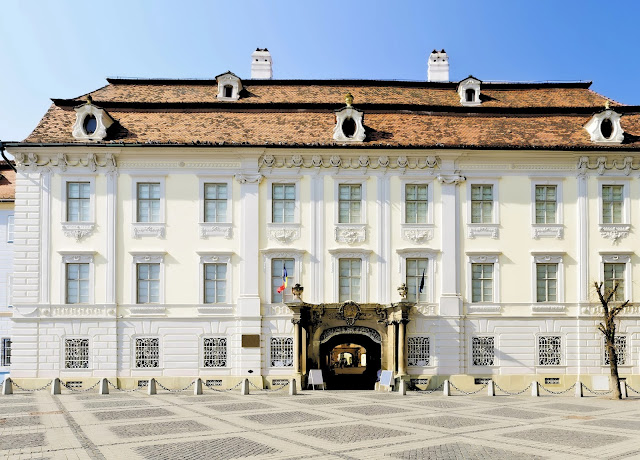
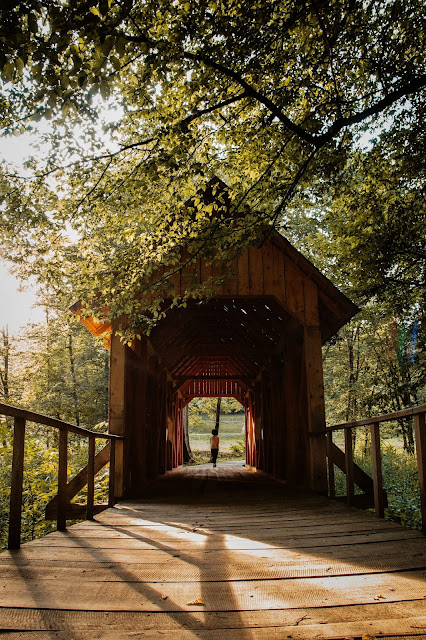


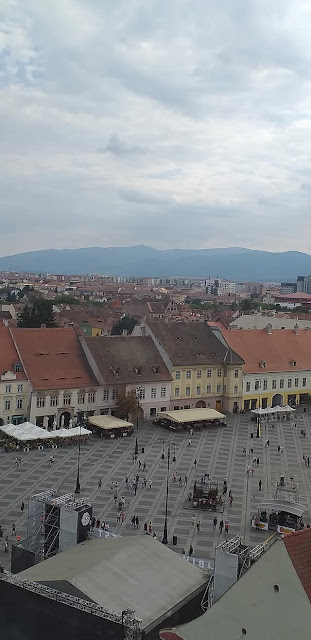


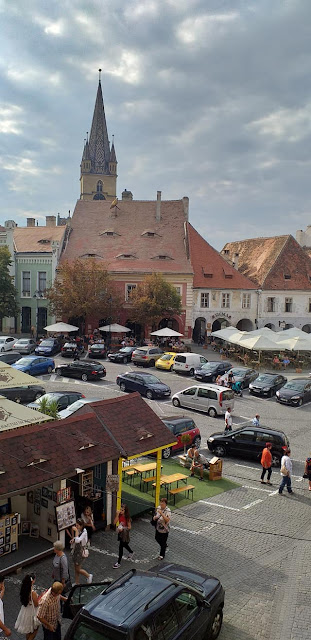
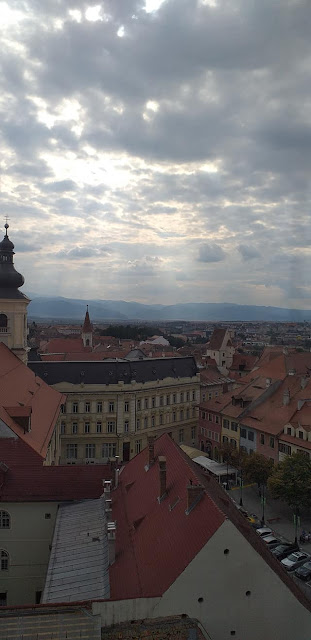
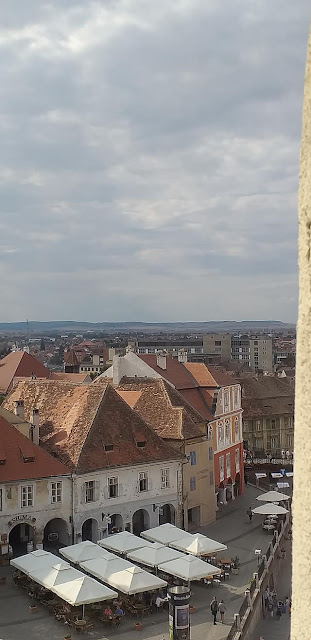

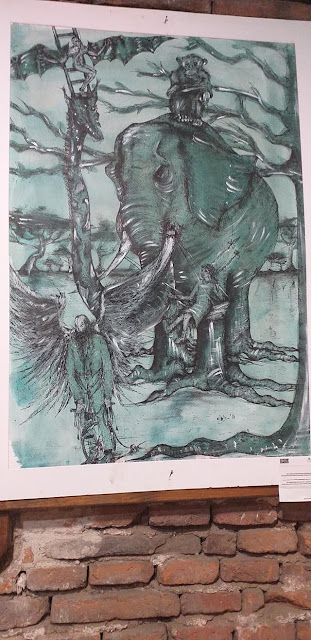
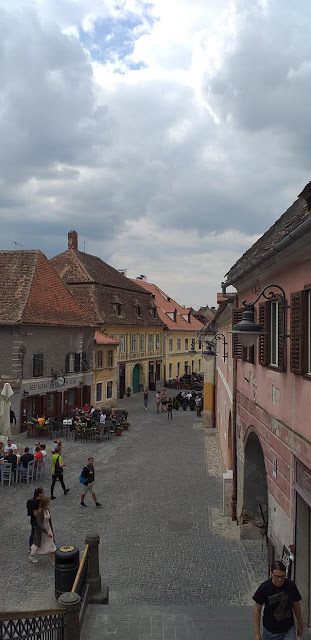
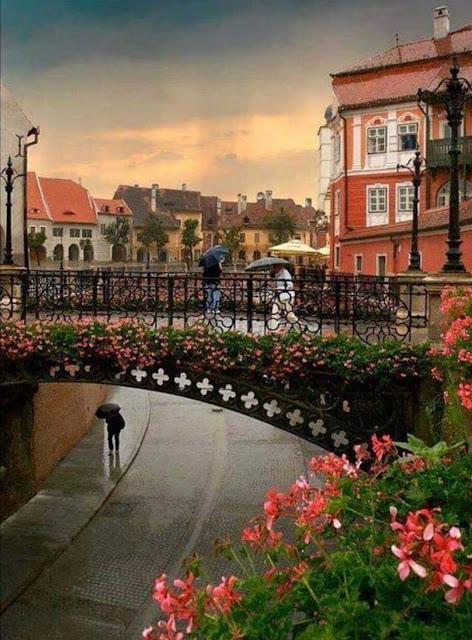
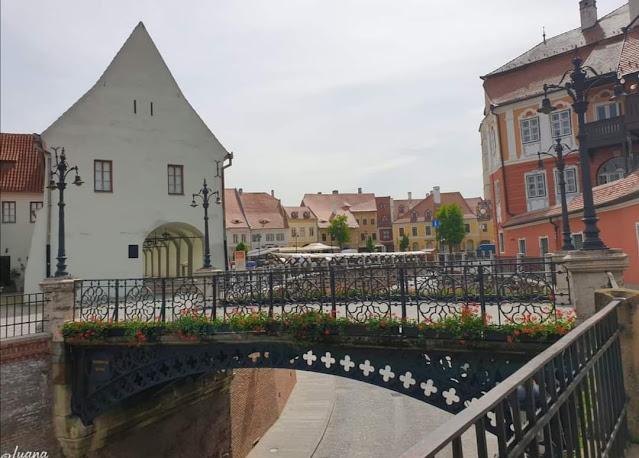











Comments
Post a Comment